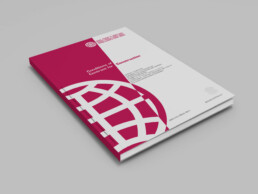
Construction costs are escalating
Under existing contracts, an employer will not want to pay more for the works. But forcing a contractor to perform works that are unprofitable or causing a massive loss is unlikely to be in the best interests of the project. It may result in the insolvency of the contractor forcing the employer to abandon the contract or re-let it, probably at a premium.
In new contracts, contractors are demanding protection from unpredictable price fluctuations. If a contractor feels exposed, it might only bid on projects with short construction programmes which give costs less time to increase. Or the contractor might seek to start work under a letter of intent on a cost-plus basis which then never crystalises into a full contract.
Is a mechanism for cost adjustment, such as FIDIC 1999 Sub-Clause 13.8 i[Adjustments for Changes in Costs], an answer?
Type of contract
The type of contract usually informs as to which party takes the risk of price fluctuations.
- In reimbursable or cost-plus contracts, the employer takes the risk. The contractor is reimbursed the actual cost, plus allowances for overheads and profit. If the contractor’s actual costs increase, the contract price will increase also.
- In remeasurement contracts and fixed price/lump sum contracts the contractor usually takes the risk unless there is a mechanism for cost adjustment.
In remeasurement contracts (such as the FIDIC Red Book – For Building and Engineering Works Designed by the Employer) the contract price is based on approximate quantities and a schedule of rates and prices. But, if the rates and prices can be adjusted where price fluctuations occur, the contract price is recalculated using the new rates and prices and the final agreed quantities. The actual work done is remeasured when the works are completed.
In fixed price/lump sum contracts (such as the FIDIC Yellow Book – Plant and Design Build) the contractor provides an overall figure, ‘a lump sum’, for all the works that are agreed to be carried out under the contract. But, if the amounts due to the contractor can be adjusted where price fluctuations occur, the contract price is recalculated.
Legal principles
It is a basic principle of law that agreements must be kept. The Latin term for this is pacta sunt servanda. Therefore, unless there is a mechanism for cost adjustment, the contractor in a remeasurement contract or fixed price/lump sum contract may have a problem. In such circumstances, there are some legal arguments which might be deployed depending upon the governing law of the contract and local legal advice.
Fundamental change of circumstance
Some legal jurisdictions will allow a contract to be modified where it becomes inapplicable because of a fundamental or extraordinary change of circumstances. For example, under:
- the legal doctrine of rebus sic stantibus (meaning ‘things thus standing’ ii) which is sometimes described as an ‘escape clause’ to the principle of pacta sunt servanda;
- or the French doctrine of imprévision (meaning ‘lack of foresight’) iii
Impossibility
A contractor might seek to argue that a contract has become impossible to perform; it is so different to the original bargain that it is frustrated so as to discharge the parties’ obligations.
Under the FIDIC 1999 editions, Sub-Clause 19.7 provides a remedy when any ‘event or circumstance outside the control of the Parties (including, but not limited to, Force Majeure) arises which makes it impossible or unlawful for either or both Parties to fulfil its or their contractual obligations…’
There is similar wording at Sub-Clause 18.6 of the FIDIC 2017 editions. However, economic unprofitability is unlikely to make it impossible or unlawful for the contractor to fulfil its contractual obligations. Just because something costs more to build does not make it impossible to build.
Force majeure
A contractor might seek to rely on force majeure, either under the governing law or in accordance with the contract conditions.
For an event to qualify as ‘Force Majeure’ under the FIDIC 1999 editions, five requirements must be met:
- it must be an exceptional event or circumstance;
- which must be beyond the parties’ control;
- which such a party could not have reasonably provided against before entering into the contract;
- which having arisen such party could not have reasonably avoided or overcome; and
- which was not attributable to the other party.
There is similar wording at Sub-Clause 18.1 of the FIDIC 2017 editions. However, the term Force Majeure is not used. The term Exceptional Events is used instead, although the definition does not actually require the event or circumstance to be exceptional.
Both Covid and the Russia-Ukraine war might fall within the FIDIC definition of Force Majeure. But to be entitled to an extension of time (or, in the case of the Russia-Ukraine war, Cost iv, the contractor must be ‘prevented’ from performing any of its obligations under the contract by Force Majeure (and is subject to giving the prescribed notice). This means a physical or legal prevention. Economic unprofitability will not normally suffice. The mere fact that the cost of performance has increased is insufficient for prevention. So, whilst the Force Majeure clause may give the contractor extra time to procure materials that were prevented from being procured on time because of Covid or the Russia-Ukraine war, it is unlikely to assist a contractor who is merely obliged to pay higher prices than originally estimated.v
Good faith
A contractor might seek to rely on the principle of good faith which, under some legal jurisdictions, may be implied into the contract. Good faith arguments are usually raised as a matter of last resort.
Escalation clauses
A mechanism for cost adjustment is, potentially, a more reliable way to limit the contractor’s risk.
In the FIDIC 1999 editions the escalation clause is at Sub-Clause 13.8, and in the FIDIC 2017 editions it is at Sub-Clause 13.7. Sometimes the escalation clause is
deleted or modified.
Sub-Clause 13.8 of the FIDIC 1999 editions (or Sub Clause 13.7 in the FIDIC 2017 editions) is an ‘opt-in’ clause. It applies only if:
- Under the FIDIC Red and Yellow Books 1999 – a table of adjustment data is included in the Appendix to Tender.
- Under the FIDIC Silver Book 1999 – provided for in the Particular Conditions.
- Under the FIDIC 2017 forms – a Schedule(s) of cost indexation is included in the contract.
The table of adjustment data or Schedule(s) is a complete statement of the adjustments to be made to the cost of labour, Goods and other inputs to the Works (for example, fuel). Any other rises or falls in the Costs are deemed to be included within the Accepted Contract Amount. No adjustment is applied to work valued on the basis of Cost or current prices.
Where it applies:
- Under the FIDIC 1999 editions – the amounts payable to the contractor are adjusted for both rises and falls ‘in the cost of labour, Goods and other inputs to the Works’ by adding or deducting amounts calculated in accordance with a prescribed formula (in the FIDIC Red and Yellow Books) or as set out in the Particular Conditions (in the FIDIC Silver Book).
- Under the FIDIC 2017 editions – the amounts payable to the contractor are adjusted for both rises and falls ‘in the cost of labour, Goods and other inputs to the Works’ by adding or deducting amounts calculated in accordance with the Schedule(s).
In the FIDIC Red and Yellow Books 1999 a formula is set out, but this may be amended as the parties choose. The wording states: ‘The formulae shall be of the following general type’. The formula is as follows:
The FIDIC Yellow Book Guidance suggests that in a plant contract formulae which are more directly related to the timing of costs incurred by the manufacturers be adopted.
The FIDIC Silver Book 1999 and the FIDIC Gold Book 2008 do not set out a formula. The FIDIC Silver Book Guidance suggests that the wording for provisions based on the cost indices in the FIDIC Yellow Book be considered.
The FIDIC 2017 editions do not set out a formula either. The Guidance states: ‘It is recommended that the Employer be advised by a professional with experience in construction costs and the inflationary effect on construction costs when preparing the contents of the Schedule(s) of cost indexation’.
It is recognised that the formula set out above to calculate the adjustment multiplier (Pn), which is to be applied to the estimated contract value, is crude, but it is a fast and reasonably credible way of calculating and reimbursing fluctuations in costs.
The formula relies on:
- A fixed element (a), representing the nonadjustable portion in contractual payments, which is fixed at the time of Contract. FIDIC suggests 10% in the Appendix to Tender or Guidance.
- The weighting of the resources (b) (c) (d), which is determined at the time of contract. For example, a road project might be 20/40/40 for labour, equipment and materials.
- Cost indices for the current ‘now’ value (n) and the original value (o) for each of, for example, labour (L), equipment (E) and materials (M), which need to be updated frequently (preferably monthly rather than quarterly or annually, but that will depend upon the cost indices chosen).
Fixed element (10%)
Where there is contractor compensable delay which pushes the project into a period of inflation, it seems unfair that this portion is non-adjustable. Perhaps, it might be claimed as a prolongation cost as it falls squarely within the definition of ‘Cost’. The author is not aware of any precedent on this.
Weightings
In the FIDIC Red and Yellow Books 1999 (but not the FIDIC Silver Book 1999 or the FIDIC 2017 editions), the weightings may be adjusted if they have been rendered unreasonable by way of Variation to the Works.
The last paragraph of Sub-Clause 13.8 of the FIDIC Red and Yellow Books 1999 states: ‘the weightings for each of the cost factors stated in the table(s) of adjustment data will only be adjusted if they have been rendered unreasonable, unbalanced or inapplicable, as a result of Variations’.
Therefore, the claiming party would need to demonstrate that the original contract weightings were correct at the time of contract and that a Variation had rendered them unreasonable, unbalanced or inapplicable. Inflation alone would be insufficient.
This provision does not apply simply where the original contract weightings fail to reflect the actual contract weightings. Sub-Clause 4.11 of the FIDIC 1999 editions states: ‘The Contractor shall be deemed to have satisfied himself as to the correctness and sufficiency of the Contract Price. … Unless otherwise stated in the Contract, the Contract Price covers all the Contractor’s obligations under the Contract (including those under Provisional Sums, if any) and all things necessary for the proper design, execution and completion of the Works and the remedying of any defects.’. The FIDIC 2017 editions have similar wording.
Cost indices
Cost indices provide a simple way to relate the original value to a corresponding cost now. Unfortunately, cost indices are not an accurate reflection of the actual costs, but they are easy and reasonably credible.
The choice of cost indices is important, and when choosing them it is necessary to understand, for example.
- Exactly what they measure. Many indices are intended to reflect only general building construction.
- In which location. The indices ought to align with the source of materials. Changes might be needed to the indices if there is a change in supplier or country of origin for the supply of materials, for example because of sanctions.
- In which currency. The currency of the cost indices and the currency for payment ought to align, otherwise there may be scope for further adjustment when the currency of the cost indices is converted into the currency of payment.
The categories of the cost indices are usually broad and not necessarily linked to specific items in the bill of quantities. Therefore, they do not work well with bespoke construction elements.
After the Time for Completion
Under the FIDIC Red and Yellow Books 1999 and the FIDIC 2017 editions, if the contractor fails to complete within the Time for Completion (meaning the time for completing the Works including any extension of time due to the contractor), further price rise risk is allocated to the contractor, and the benefit of any falling prices is allocated to the employer.
Adjustments to prices after the Time for Completion are made using the most favourable to the employer of:
- the index or price applicable from the date 49 days (i.e. 7 weeks) before the expiry of the Time for Completion; or
- the current index or price.
Procedure
Under both the FIDIC 1999 and 2017 editions, an application for an Interim Payment Certificate under Sub-Clause 14.3 must include any amounts to be added or deducted for changes in cost under Sub-Clause 13.8. The contractor is not obliged to give notice under Sub Clause 20.1 of the FIDIC 1999 editions.
Other options
There are also practical things which the parties might consider in order to manage the risk of escalating construction costs in a smarter way.
During the tender process:
- The employer might give the contractor more flexibility when procuring materials by being less prescriptive in the specifications, for example in respect of the identity of the supplier and/or the type of material.
- The employer might encourage value engineering and permit alternative products where previously specified materials have dramatically increased in price.
- Provisional sums might be used for specific defined materials, to allow for greater price flexibility.
- The contractor might date limit its pricing for specific materials, therefore limiting its period of risk.
- The contractor might procure goods locally, where possible, in order to reduce transportation costs.
- The contractor might build closer and more collaborative relationships with suppliers.
During the works:
- The employer might agree to vary the contract to take into account some of the suggestions above.
- The contractor (or the employer) might identify capacity in the supply chains, buy price volatile goods, equipment and materials in advance and negotiate a delayed delivery or stockpile them.<a href=”#vi”><sup>vi</sup></a> The contractor might need to do this in any event because of excessive lead in times.
- The employer might agree to pay more in a supplemental agreement <a href=”#vii”><sup>vii</sup></a>
Conclusion
Contractors are demanding protection against escalating construction costs.
Although not without criticism, a mechanism for cost adjustment such as FIDIC 1999 Sub-Clause 13.8 is a reasonably credible way to limit the contractor’s risk if professional advice is sought on the correct cost indices to apply when preparing the contract documents.
i FIDIC 2017 Sub Clause 13.7
ii For example, under Polish law
iii Article 1195 of Ordonnance No 2016-131 of 10 February 2016, enforceable in contracts concluded after 1 January 2016, states: “Where a change of circumstances that was unforeseeable at the time of the contract’s conclusion renders performance exceedingly onerous for a party that has not accepted to assume such risk, the party may ask the other party to renegotiate the contract”
iv War is payable under Sub-Clause 19.4(b) but Covid Is not. Natural catastrophes are excluded. For Cost, the event or circumstance must be of the kind listed in sub-paragraphs (i) to (iv) of Sub-Clause 19.1, and in the case of sub-paragraphs (ii) to (iv) occur in the Country
v Further, there is no entitlement to Cost in respect of natural catastrophes, and to be entitled to Cost in respect of the other specified categories, the force majeure must have occurred within the Country unless the force majeure arises out of ““wars, hostilities (whether war be declared or not), invasion, act of foreign enemies”.
vi This will require up-front payment and security in relation to such payments.
vii For example, in the English case of Williams v Roffey Bros [1990] 2 WLR 1153 a contractor realised it had priced the works too low and would be unable to complete at the originally agreed price. It approached the employer who had recognised that the price was particularly low and was concerned about completing the contract on time. The employer agreed to pay the contractor more.

Author:
Victoria Tyson
Profile
Contact:
victoria.tyson@howardkennedy.com
Date:
January 2023
Related articles
March 16, 2022
The Dangers of Employer Set Off in your FIDIC Contract: Suspension and Termination
Under existing contracts, an employer will not want to pay more for the works. But forcing a…
January 18, 2023
FIDIC 2022 Reprints: 10 Key Areas Of Change In The FIDIC Red Book 2017
FIDIC ‘launched’ the FIDIC 2022 reprints at the FIDIC International Construction Users’ Conference…



